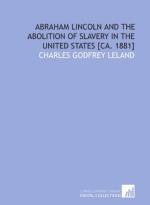|
This section contains 6,833 words (approx. 23 pages at 300 words per page) |

|
SOURCE: Schulman, Ivan A. “The Portrait of the Slave: Ideology and Aesthetics in the Cuban Antislavery Novel.” In Comparative Perspectives on Slavery in New World Plantation Societies, edited by Vera Rubin and Arthur Tuden, pp. 356-67. New York: New York Academy of Sciences, 1977.
In the following essay, Schulman argues that Cuba's nineteenth-century abolitionist novels, though few in number, set the stage for emancipation in Cuba and were the earliest and most influential critiques of the island's long tradition of slavery.
La primera tarea que se impuso nuestra literaturea … [fue] … la preocupación social de orden ético …
Augusto Roa Bastos1
An Anticolonial Statement
The origins of the novel in Cuba are irrevocably linked to the internal contradictions and inconsistencies of the institution of slavery, the repressive policies of the colony, and the polar dynamics of Neoclassicism, Romanticism, Realism, Costumbrismo and Eclecticism. As a consequence, an exclusionary analysis of the...
|
This section contains 6,833 words (approx. 23 pages at 300 words per page) |

|


